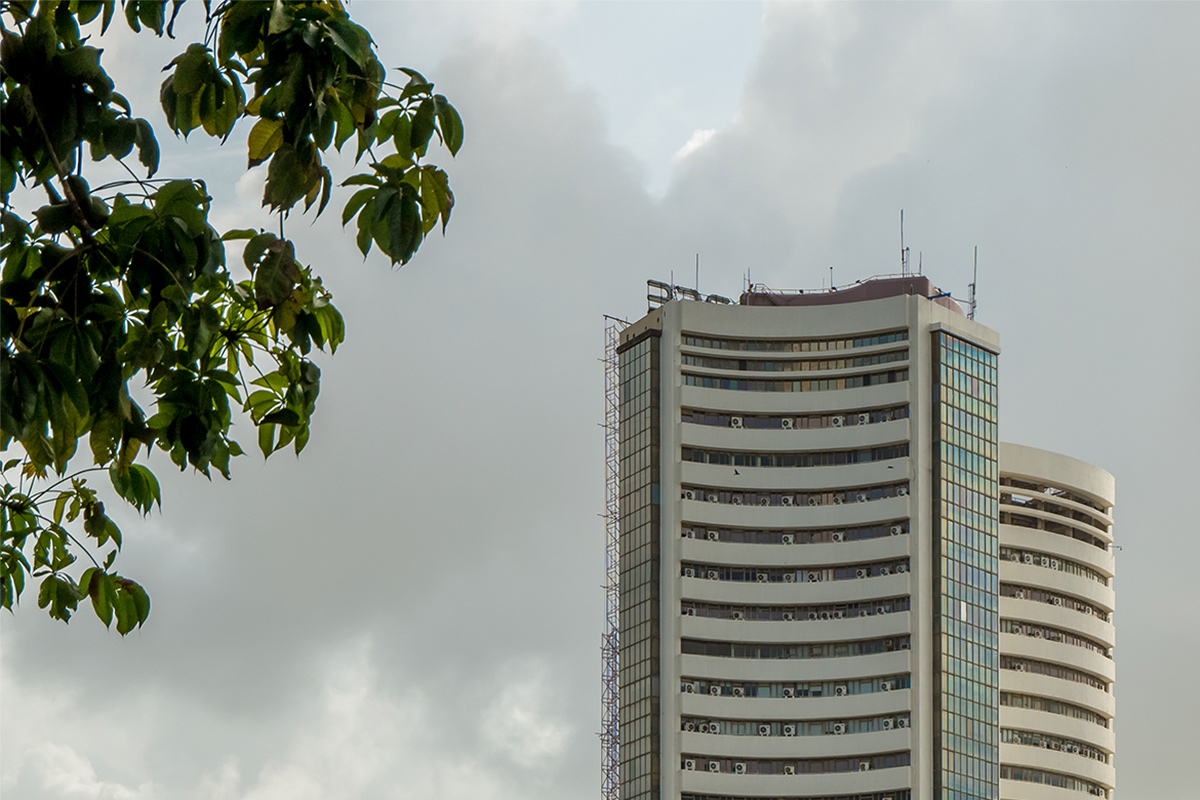Market ends flat in rangebound session amid tariffs concern
At close, the Sensex was down 7.51 points or 0.01% at 74,332.58, and the Nifty was up 7.80 points or 0.03% at 22,552.50. For the week, BSE Sensex added 1.5% and Nifty jumped 2%.
“Financials, capital goods, select autos, telecom and construction related stocks can be bought on declines,” Vijayakumar said.

At 9.33 am, Sensex traded at 59,303.96 points, down 152.82 points or 0.26 per cent, whereas Nifty traded at 17,671.95 points, down 46.40 points or 0.26 per cent. (Photo: iStock)
Indian stocks declined, though marginally, on Thursday morning in line with weak global cues, following yet another policy rates hike by the US Federal Reserve in its fight against high inflation.
However, a steep decline was likely cushioned as investors seemed to have already discounted the possible rate hikes by the US central bank. At 9.33 am, Sensex traded at 59,303.96 points, down 152.82 points or 0.26 per cent, whereas Nifty traded at 17,671.95 points, down 46.40 points or 0.26 per cent.
Advertisement
“The big question from the Indian market perspective is whether India’s outperformance will continue in the present global risk off context. Investors can remain optimistic but be cautious since India’s valuations are on the higher side,” said V K Vijayakumar, Chief Investment Strategist at Geojit Financial Services.
Advertisement
“Financials, capital goods, select autos, telecom and construction related stocks can be bought on declines,” Vijayakumar said.
Meanwhile, the Indian currency rupee breached the psychologically crucial 80 mark again to touch another fresh all-time of 80.44 against the US dollar against its previous day close of 79.97. This sharp depreciation was because of the current strength in the US dollar Index.
The key policy rate in the US was raised by 75 basis points to 3.0-3.25 per cent — which is the third consecutive hike of the same magnitude.
The US central bank seeks to achieve maximum employment and inflation at the rate of 2 per cent over the long run and it anticipates that the ongoing hikes in the target range will be appropriate.
Reacting to the rate hike move, stocks in the US fell nearly 2 per cent to close the day.
Consumer inflation in the US though declined marginally in August to 8.3 per cent from 8.5 per cent in July but is way above the 2 per cent goal.
Raising interest rates is a monetary policy instrument that typically helps suppress demand in the economy, thereby helping the inflation rate decline.
The US Fed statement added that the Committee’s futures assessments would consider a wide range of information, including readings on public health, labour market conditions, inflation pressures and expectations, and financial and other international developments.
“Price stability is the responsibility of the Federal Reserve and serves as the bedrock of our economy. Without price stability, the economy does not work for anyone.
In particular, without price stability, we will not achieve a sustained period of strong labour market conditions that benefit all,” the US central bank’s Chair Jerome Powell in his opening statement after the latest monetary policy review meeting.
Powell added the central bank was moving our policy stance purposefully to a level that will be sufficiently restrictive to return inflation to 2 per cent.
“We are highly attentive to the risks that high inflation poses to both sides of our mandate, and we are strongly committed to returning inflation to our 2 per cent objective,” Powell said later in his opening statement.
On slowing the pace of rate hikes, the Chair said: “At some point, as the stance of monetary policy tightens further, it will become appropriate to slow the pace of increases, while we assess how our cumulative policy adjustments are affecting the economy and inflation.”
He added restoring price stability will likely require maintaining a restrictive policy stance for some time and a historical record cautions strongly against prematurely loosening policy.
Advertisement